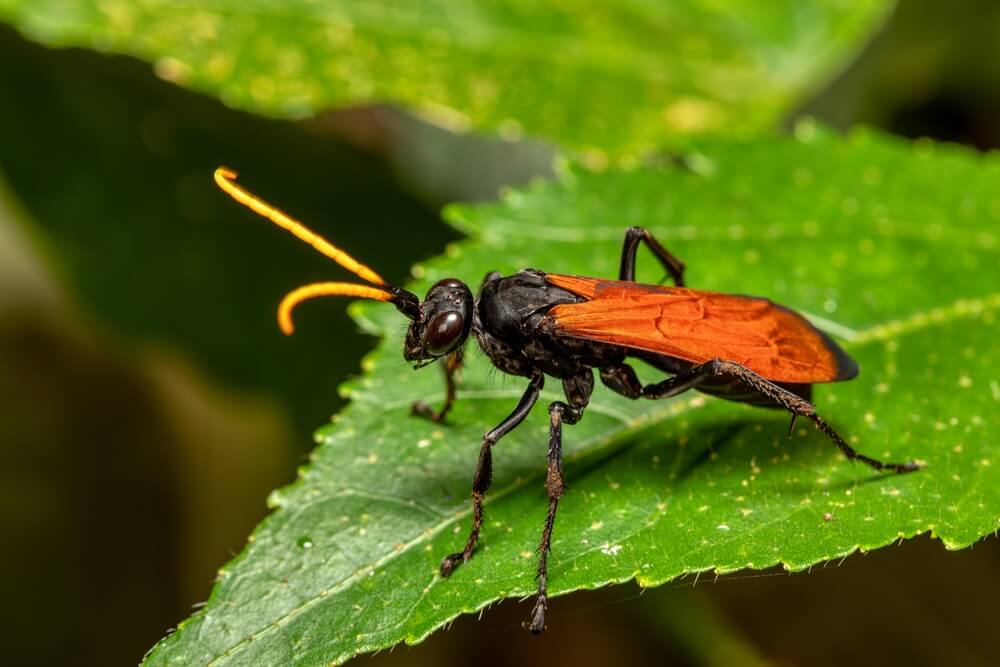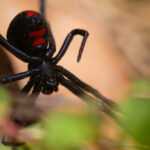The Tarantula Hawk: Nature’s Most Painful Wasp Sting Explained
Discover the intense pain of the Tarantula Hawk’s sting and what makes it one of nature’s most formidable experiences. Read the article to learn more!
Tarantula Hawk: The Ferocious Wasp with a Painful Sting
A tarantula hawk is a large wasp known for hunting tarantulas and delivering a painful sting. This article covers their life cycle, behavior, and role in the ecosystem.
Main Insights
- The Tarantula Hawk is renowned for its excruciating sting, ranking just below the bullet ant on the Schmidt Pain Index, making it one of the most feared insects in the animal kingdom.
- With a complex and gruesome life cycle, female tarantula hawks paralyze tarantulas to use as living hosts for their eggs, ensuring a continuous food source for their larvae.
- Despite their fearsome sting, tarantula hawks are generally docile toward humans, only striking when provoked, showcasing their importance in both pollination and ecological balance.
Meet the Tarantula Hawk
Tarantula hawks are characterized by their vivid orange wings and deep blue-black bodies, making them highly visible members of the insect kingdom. This eye-catching color scheme functions as a deterrent, signaling to would-be predators about the intense sting they possess. As part of the family Pompilidae, these sizable wasps can grow up to 6.5 centimeters in length and rank among some of the most dominant predators within their group.
Within this captivating subset of spider wasps lies an array of 133 recognized species known collectively as tarantula hawks—each one presenting its own intrigue. Renowned for having one of the most excruciating stings across all insects, the tarantula hawk employs its sting not merely for defense but also as an integral tactic in overpowering its namesake prey: tarantulas.
The Life Cycle of a Tarantula Hawk Wasp
The reproductive cycle of the tarantula hawk wasp is an intricately designed sequence that guarantees the continuation of its progeny. This begins as adult tarantula hawks participate in courtship, which leads to the female seeking out a living space within a captured tarantula for her offspring – essentially using it as an incubator for her egg. There are various stages in their life cycle: adulthood, coupling, predation, ovipositioning (egg-laying), larval growth, and then transformation into pupae.
In order to lay each individual egg she produces, a female tarantula hawk necessitates one specific host, a female tarantula. The reliance on this singular breeding strategy underscores the intricate adaptation and specialization inherent in their lifecycle and makes them among some of the most fascinating insects under observation.
Mating Rituals
Tarantula hawks engage in highly competitive and enthralling mating rituals. Male wasps demonstrate their vigor and endurance while competing to draw the interest of female tarantula hawks during these mating flights, with each male striving to captivate a female for courtship.
Once a female chooses an adequate male partner, the courtship process is initiated. Their intricate interplay of allure and acceptance lays the groundwork for the propagation of future generations of these impressive insects.
Paralyzing Prey
After engaging in a ritualistic mating dance, the female tarantula hawk seeks out her preferred victim—a sizable female tarantula. She employs her powerful sting to incapacitate an appropriate host with precision and purpose.
Once she has successfully immobilized the spider with her sting, it becomes an ideal live nursery for the future generation. The female lays just one egg on the abdomen of the paralyzed spider. This guarantees that as her larva matures, it will benefit from a steady supply of fresh nourishment directly from its living prey.
Larval Development
In a span of three to four days, the egg gives way to a small larva. This newborn larva starts feeding on its live tarantula host right away, methodically devouring it in order to sustain itself and grow. The process is relentless but vital for the larva’s development as it extracts all essential nutrients from the tarantula.
The relationship between the parasite and its spider host exemplifies nature’s unforgiving cycle within the insect realm, illustrating how survival often depends on such ruthless methods like those seen in the life cycle of a tarantula hawk wasp.
The Painful Sting of a Tarantula Hawk
Equipped with a sting renowned for its staggering potency, the tarantula hawk employs this weapon not only in predation but also as an impressive means of safeguarding itself from would-be predators and dangers.
Such is the agony induced by this insect’s sting that it ranks among the most severe forms of pain known to exist within nature. This potent defensive measure underscores the wasp’s formidable status among other insects and their predators.
Ranking on the Pain Scale
On the Schmidt Pain Index, the tarantula hawk’s sting ranks just below the infamous bullet ant, making it one of the most painful stings known to humans. The pain is described as severe and incapacitating, often leaving victims unable to do anything but scream in agony.
This intense pain, while temporary, can last for hours or even days, making the tarantula hawk’s sting a formidable deterrent against potential threats.
Effects of the Sting
Although a tarantula hawk sting inflicts severe discomfort, it is not fatal to humans. The intense pain from the sting doesn’t necessitate medical intervention and diminishes without any enduring harm. The effect of the sting briefly paralyzes its target, causing immobility for a limited duration.
This protective strategy enables the tarantula hawk to fend off dangers and persist with its life cycle without disruption.
Habitat and Distribution
Across the world, tarantula hawks have established considerable populations, especially throughout the Americas. These wasps are notably abundant in South and Central America and can also be found extensively in the southern United States.
Southeastern Peru is home to Pepsis heros, which are recognized as one of the largest species of tarantula hawks and can reach up to 11 centimeters in length. Meanwhile, Pepsis thisbe, a common species among these wasps, is frequently observed within the Grand Canyon where there’s an abundance of tarantulas.
Ecological Role and Importance
Tarantula hawks are instrumental in ecological equilibrium, serving not only as pollinators but also as regulators of tarantula numbers. They ensure the preservation of biodiversity and help stabilize the environment.
These wasps have a notable impact on their surroundings by hunting tarantulas and facilitating plant fertilization, thereby illustrating the complex symbiotic relationships that exist within natural habitats.
Pollination
Tarantula hawks are notable pollinators, primarily attracted to the nectar found in a wide array of flowers. Their interaction with plants like milkweeds is essential as they carry pollen from one plant to another while feeding.
While adult tarantula hawks consume nectar, it’s only the females that pursue and capture spiders for their offspring’s nourishment. The importance of these wasps is highlighted by their contribution both to the process of pollination and the regulation of spider populations.
Natural Predator Control
Tarantula hawk wasps are integral in controlling the population of spiders, especially tarantulas, aiding in the prevention of their overabundance and sustaining a balanced ecosystem. Their predation substantially diminishes tarantula numbers that might otherwise escalate excessively.
These wasps specifically prey on tarantulas, highlighting their importance as natural predators within the ecological system by contributing to its equilibrium.
Human Interactions with Tarantula Hawks
Tarantula hawks, known for their formidable reputation, are actually quite docile when unprovoked. The principal means of defense they possess is a sting with considerable potency that has the capability to inflict extreme discomfort.
The state of New Mexico honors the tarantula hawk wasp by designating it as its official insect, which emphasizes both its importance and role within human society.
Are They Dangerous?
Tarantula hawks exhibit a non-aggressive demeanor towards humans and will deploy their potent sting in self-defense only if they feel threatened or are provoked.
By understanding the conduct of these intriguing wasps, people can live harmoniously alongside them.
State Insect Status
In New Mexico, the tarantula hawk wasp is held in high esteem as the designated state insect. This honor acknowledges both its distinct ecological function and its cultural relevance within the area.
This acknowledgment of the wasp signifies its prominence within New Mexico’s environment and underscores its influential role in shaping the local ecosystem.
Fascinating Facts About Tarantula Hawks
Renowned for their extended limbs that aid in their hunting prowess, tarantula hawks boast a vivid display of bright orange wings juxtaposed with a blue-black body. This electrifying color scheme renders them not only stunning but also formidable to behold, capturing the interest of both insect scholars and wildlife admirers.
As specialized predators, these wasps excel at seeking out sizable spiders—particularly tarantulas—to serve as live incubators for their offspring. With such distinctive behaviors tailored to their lifecycle, they represent some of the most captivating insects within the spider wasp category.
Frequently Asked Questions
How painful is the sting of a tarantula hawk?
The sting of a tarantula hawk delivers excruciating pain, ranking just below the bullet ant on the Schmidt Pain Index, leaving even the bravest trembling in agony.
It’s a harrowing reminder of nature’s fiercest torments.
Are tarantula hawks dangerous to humans?
Tarantula hawks are not aggressive, but if provoked, their sting delivers excruciating pain that you won’t soon forget; however, rest assured, it is not life-threatening.
Remember, respect their space to avoid the agony!
What role do tarantula hawks play in the ecosystem?
Playing an essential role in our ecosystem, tarantula hawks serve as important pollinators and also help regulate the population of tarantulas. Their contribution is a testament to the complex interrelations that maintain ecological equilibrium.
Where can tarantula hawks be found?
Tarantula hawks, magnificent and fearsome, roam the earth almost everywhere—except for Europe and Antarctica—thriving especially in the lush jungles of South and Central America and the sun-baked landscapes of the southern United States.
Their presence sparks awe and a hint of dread wherever they fly.
Why is the tarantula hawk the state insect of New Mexico?
Honored as New Mexico’s state insect, the tarantula hawk represents a dynamic component of the area’s distinctive ecological tapestry. Its contribution to the environment is crucial and reflects the unbridled splendor inherent in New Mexico’s wildlife. The tarantula hawk not only stands out for its significant ecological role but also for captivating those who witness this impressive insect within its natural habitat.



